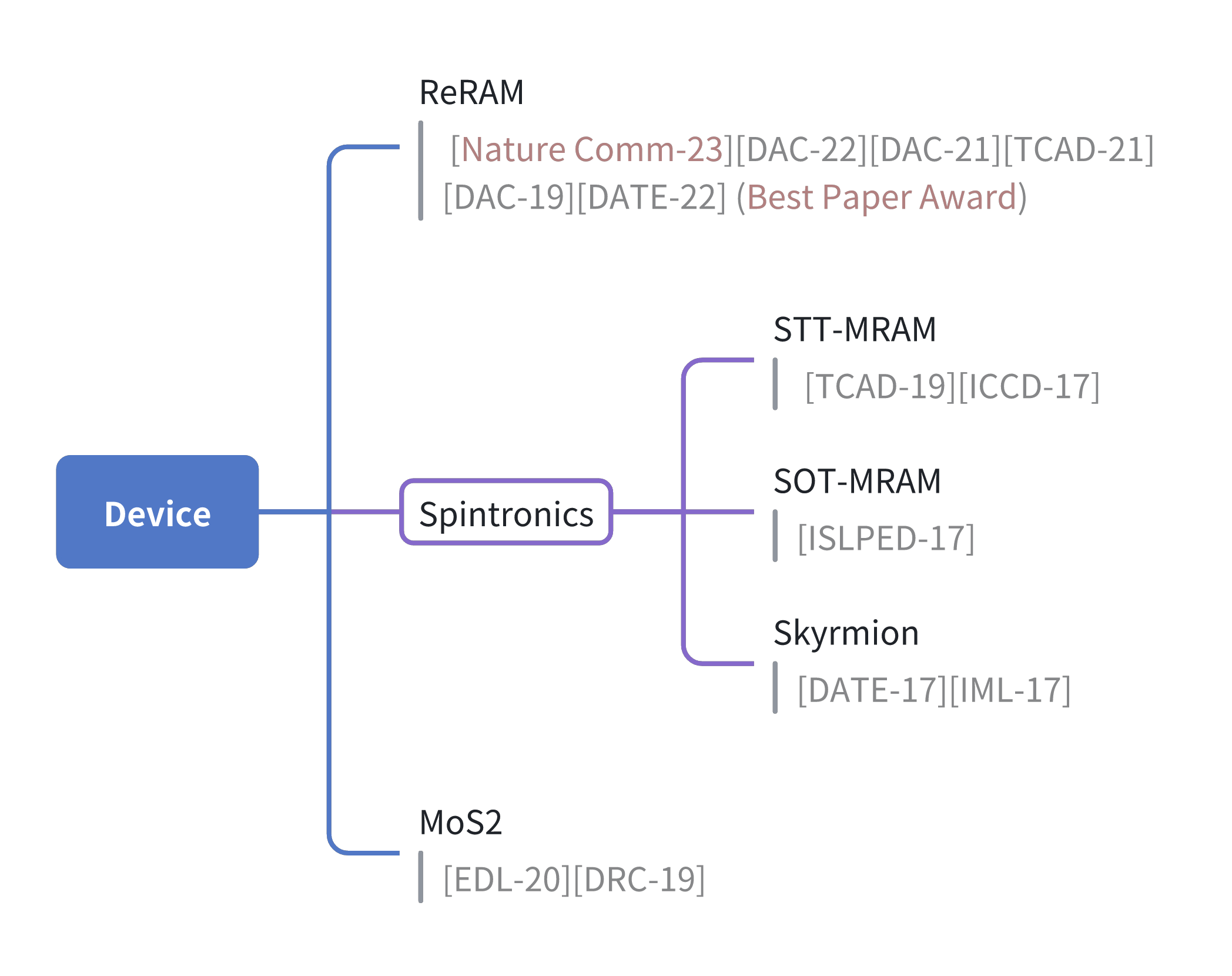Device

Figure: Mind map of our research in device.
Post-CMOS Emerging Devices
Post-CMOS emerging devices refer to a new generation of electronic devices that are being developed to overcome the limitations of traditional complementary metal-oxide-semiconductor (CMOS) technology. These devices are based on novel materials and structures, such as ReRAM, MRAM, and MoS2, and are being researched as potential replacements for CMOS in future electronic systems.
ReRAM (Resistive Random Access Memory) is a type of non-volatile memory that stores information by changing the resistance of a thin film of metal oxide. ReRAM has advantages over traditional Flash memory, such as faster read/write times and lower power consumption, and has the potential to enable more efficient and faster data storage.
MRAM (Magnetoresistive Random Access Memory) is a non-volatile memory technology that uses magnetic fields to store data. MRAM has advantages such as fast read/write times, low power consumption, and high durability. MRAM has the potential to replace DRAM and SRAM as a universal memory technology.
MoS2 (Molybdenum Disulfide) is a two-dimensional material that has potential applications in transistors and other electronic devices. MoS2 has advantages such as high electron mobility and high on/off ratio, which make it a promising material for use in future electronic devices.
Other post-CMOS emerging devices being researched include carbon nanotubes, graphene, and quantum dots. These devices have the potential to revolutionize the field of electronics and lead to faster, more efficient, and more powerful electronic systems.
